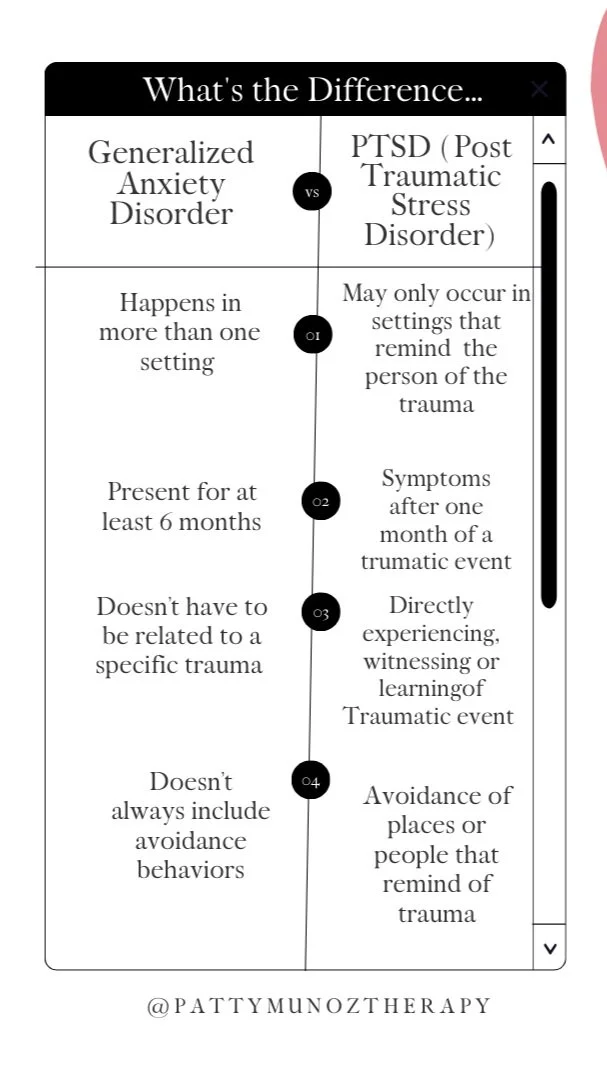Four main differences between Generalized Anxiety Disorder (GAD) and Post Traumatic Stress Disorder (PTSD)
What is the difference between Generalized Anxiety Disorder and Post-Traumatic Stress Disorder or PTSD? Among Latinos in the US lifetime rate of Anxiety ranges from 15% to 25% according (APA Psych 2020). Because of the high prevalence it is crucial that we understand what General Anxiety Disorder and PTSD may look like in ourselves or a loved one. Therapists often get the question of what the difference between these two diagnosis or disorders. Even though GAD and PTSD share some of the symptoms they are also quite different in their presentation. Below we discuss four main differences between these two disorders.
The first one is Generalized Anxiety Disorder happens in more than one setting. For example, it can happen at home, at work, and out in the community. Whereas PTSD may only occur in one setting. It could be in only one setting that reminds a person of a trauma. PTSD doesn't necessarily have to occur in more than one setting. This is an important difference because with PTSD as a person may avoid certain places that remind them of the trauma whereas with Generalized Anxiety Disorder doesn’t have to related to a certain trauma reminder.
The second difference is the timeline of the symptoms. For Generalized Anxiety Disorder to be diagnosed the symptoms of anxiety (excessive worry, impairments in functioning, unable to relax, overthinking, avoidance, etc. according to DSM-5 Diagnostic and Statistical Manual of Mental Disorders) must be present for at least six months. Click here to learn more about GAD. Whereas with PTSD symptoms ( intrusive thoughts, flashbacks, nightmares, hyper-vigilance, avoidance of places or people that remind of the trauma, etc according to DSM-5 Diagnostic and Statistical Manual of Mental Disorders) must be present after one month of the occurrence of a traumatic event. This is a very important difference between Generalized Anxiety Disorder and PTSD. If anxiety symptoms occur in the first one to three weeks it is considered Acute Stress Disorder, which is an immediate response to traumatic event and not PTSD.
Furthermore, Generalized Anxiety Disorder doesn't have to be related to a specific trauma. PTSD on the other hand, means that a person directly experiences or knows of a traumatic event that is causing distress. That is a very important difference to make that Generalized Anxiety Disorder doesn't necessarily mean that a person has experienced trauma. Lastly. Generalized Anxiety Disorder doesn't always include avoidance behaviors of places, people, or situations, whereas the criterion for PTSD includes avoidance of places or people that remind a person of the trauma.


